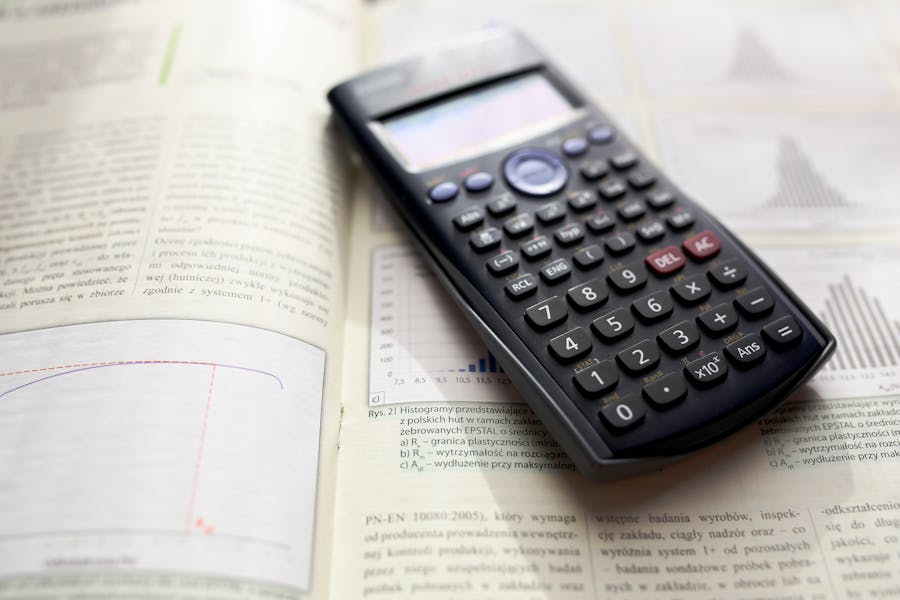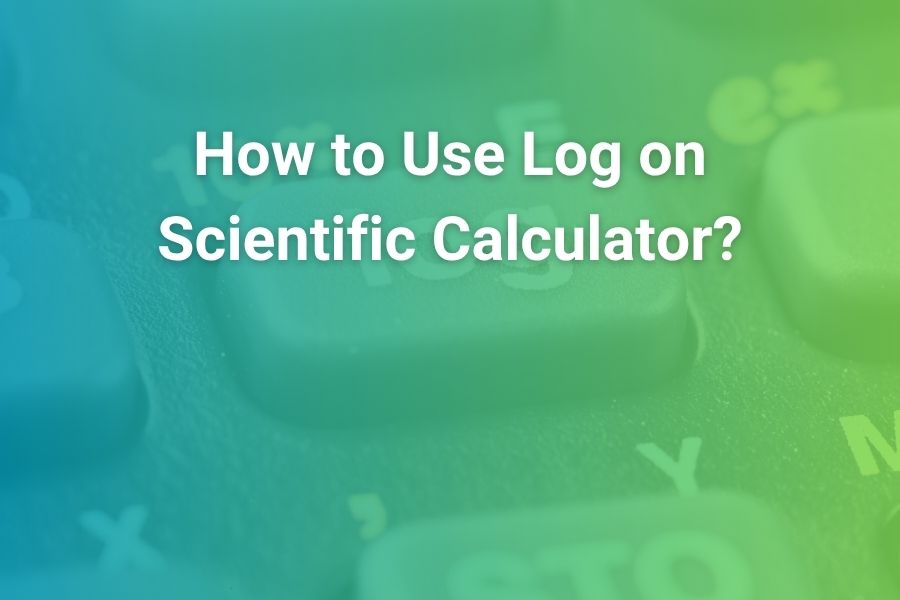
If you’ve ever stood in the school-supplies aisle or scrolled through pages of calculator listings wondering whether a graphing calculator “counts” as a scientific calculator, you’re asking the right question. The two categories overlap heavily, yet they aren’t identical. A graphing calculator includes the full feature set of a scientific calculator and then adds plotting, lists, matrices, statistics, and often programming. A scientific calculator focuses on core math and science operations without graphing or app ecosystems. This guide explains the difference in plain language, shows when each tool is the right choice, and gives you practical advice for classes, exams, and budgets—so you buy once, learn it well, and feel confident on test day.
Definitions That Actually Help
What is a scientific calculator?
A scientific calculator is designed for math and science courses where you need fast access to trigonometry, exponents, logarithms, roots, scientific notation, factorials, permutations, combinations, and conversions between degrees and radians. Many modern models also support fractions and mixed numbers, basic complex-number arithmetic, and statistical summaries like mean and standard deviation. They tend to be compact, durable, and inexpensive.
What is a graphing calculator?
A graphing calculator is everything above plus more. It plots functions on a pixel display, traces values, and shows intersections, zeros, maxima, and minima. It stores numbers in lists and matrices, performs regressions and distributions for statistics, and often runs small programs or apps. With a bigger screen and menus, it becomes a portable numerical lab for algebra, precalculus, calculus, and statistics.
Direct answer to the core question
A graphing calculator is not the same category as a scientific calculator—but it includes the scientific feature set. Put differently: every graphing calculator is a superset of a scientific calculator, while most scientific calculators cannot graph.
Feature-by-Feature: What Each Tool Can Do
The scientific essentials (both categories share these)
- Arithmetic with order of operations and parentheses
- Exponents and roots (including square, cube, nth-root, and power keys)
- Trigonometric functions and their inverses
- Logarithms (base 10) and natural logs (ln), plus 10^x and e^x
- Degree/radian switching
- Scientific notation entry and display (EE/EXP keys and SCI mode)
- Factorials, permutations, combinations
- Fraction templates or fraction-to-decimal toggles on many modern models
What graphing adds (and scientific does not)
- Plotting multiple functions simultaneously
- Tracing and evaluating functions on the graph
- Solving numerically for intersections and roots
- Lists, tables, matrices, and matrix operations
- Regressions (linear, quadratic, exponential, sinusoidal, logistic)
- Distributions and statistical tests on many models
- App and program support for customized workflows
- Color screens and multiple windows for plots and tables on newer devices
If your class or exam needs any of those graphing-specific capabilities, a scientific calculator alone will feel limiting. If your semester focuses on arithmetic, algebraic manipulation, trig evaluations, and unit conversions, a scientific model is often faster and cheaper.
When a Scientific Calculator Is the Perfect Tool
Early and middle high school math
Pre-algebra, Algebra 1, and many Geometry units reward speed. A scientific model’s simpler layout lets you fly through parentheses, fractions, and trig ratios without navigating deeper menus.
Chemistry fundamentals and intro physics
You’ll use scientific notation, logs for pH, and conversions between degrees and radians. A scientific calculator handles all of this crisply. For labs that require heavy regressions or modeling, your instructor will say when graphing is preferred.
Classes that explicitly ban graphing calculators
Some quizzes, standardized tests, or school policies restrict programmable devices. In those rooms, a scientific calculator isn’t just sufficient—it’s required.
When a Graphing Calculator Pays for Itself
Algebra 2, Precalculus, and higher
Graphing transforms function study from abstract rules into visual insight. You’ll test conjectures about transformations, see asymptotes, and compare models on the same screen.
Calculus and statistics
From estimating limits and visualizing derivative behavior to running residual plots and choosing best-fit models, the graphing workflow saves time and reinforces concepts.
STEM projects and lab courses
Lists, matrices, and quick regressions matter in lab write-ups, engineering introductions, and data-rich assignments. Programming small utilities can automate repetitive steps.
“Can a Graphing Calculator Replace a Scientific One?”—Yes, With Caveats
A graphing calculator includes all scientific functions. If your course allows graphing calculators, you can safely carry one device. The caveats are practical: cost, complexity, and rules. The graphing model is more expensive and slightly heavier; it can be slower for one-line computations until you know your way around; and some tests or teachers will restrict graphing models. When graphing is banned, you must bring a compliant scientific calculator.
Real-World Buying Decisions: A Simple Framework
1) Ask your teacher first
What calculator will the instructor demonstrate in class? Matching that device removes friction. If the class teaches with a particular graphing model, learning that interface pays off quickly.
2) Look two years ahead
If your schedule includes Algebra 2, Precalculus, and a calculus or statistics course, a graphing calculator is a smart long-term buy. If not, a modern scientific calculator may be all you need.
3) Check exam rules
Standardized-exam policies can vary. Many accept widely used non-CAS graphing models, while others allow only scientific models. Always confirm the current rules for your exam year and course.
4) Balance budget and value
A quality scientific calculator costs a fraction of a graphing calculator. If your class doesn’t need graphing, save the money. If advanced courses are planned, buying once—graphing now—can be cost effective.
Common Models and What They Mean for You
Scientific mainstays
Casio fx-991EX (ClassWiz) and Texas Instruments TI-36X Pro are favorites among teachers for their fraction handling, equation templates, and robust scientific feature sets. They’re light, durable, and inexpensive to replace.
Graphing workhorses
The TI-84 Plus CE remains a classroom standard because the interface is ubiquitous and instructors know how to teach with it. Casio’s graphing lineup and HP Prime offer strong alternatives; they’re excellent for visual learners and data-heavy projects.
Charging and batteries
Graphing calculators with rechargeable batteries (like many newer color-screen models) charge by USB and typically run for weeks per charge under normal use. Scientific calculators often use coin cells that last for years. Keep spares or a cable handy during exam season.
How Each Choice Feels During Homework
Speed of single calculations
Scientific calculators are hard to beat for quick evaluations. The key layout is tight and the screens are optimized for short expressions. Graphing calculators are scarcely slower once you build muscle memory, but there is a learning curve.
Multi-step problem solving
When you chain results, store variables, or compare multiple expressions, graphing calculators shine. You can scroll to a previous line, edit, re-evaluate, and even graph the expression to look for errors.
Checking work
Visual inspection is a superpower. Graphing a function, tracing to an intersection, or seeing where a curve crosses the axis can catch algebra mistakes before they cost points.
What Teachers Consider When They Recommend a Model
Teachers think in terms of classroom logistics, exam compliance, and learning curves. A single model standard—often a TI-84 series in courses that allow graphing—lets the whole room follow the same steps. In courses focused on algebraic manipulation rather than data analysis, teachers might prefer every student to have a scientific calculator to reduce complexity and cost. Some teachers deliberately forbid graphing calculators in early units so students master core skills before relying on visualization and solvers.
Practical Classroom Scenarios (So You Can Picture the Difference)
Algebra 1: Solving linear equations
Both tools handle this effortlessly. A scientific calculator is usually faster because you simply evaluate expressions and check with substitution. A graphing calculator can overlay lines to show intersections, which helps visual learners.
Algebra 2: Quadratic functions
A scientific calculator will evaluate values and the quadratic formula. A graphing calculator plots the parabola, shows vertex and intercepts, and traces to confirm your algebra. The visual method helps confirm whether a discriminant indicates two, one, or zero real roots.
Precalculus: Trigonometric identities
Scientific models are plenty for verifying numeric equality at specific angles. Graphing calculators let you overlay the two sides of an identity and see whether the plots coincide for a range of inputs, deepening conceptual understanding.
Statistics: Regression and residuals
Scientific calculators can compute summaries. Graphing calculators fit models, show plots, compute correlation coefficients, and display residual patterns. That’s a huge timesaver in AP Statistics and college stats.
Cost, Durability, and Long-Term Ownership
Upfront price
Scientific calculators typically sit in the $10–$40 range; graphing models commonly range from $90 to $150+. If you’re budget constrained and don’t need graphs right now, start scientific.
Lifespan
Both types can last years with modest care. Scientific calculators often outlive multiple backpacks because their power demands are tiny and the cases are rugged. Graphing calculators fare well too if you keep the slide case on and avoid overstuffed bags pressing on keys.
Resale and hand-me-down value
Graphing calculators hold value longer in schools that standardize on them. If you buy one early and keep it in good condition, a sibling or classmate can benefit later.
Rules and Realities of Exams
Standardized tests
Many major exams permit specific non-CAS graphing calculators and nearly all standard scientific calculators. Policies can evolve, and local school rules can be stricter than national ones. Always verify current allowances for your exact test and year.
In-class assessments
Your teacher sets the rules. If an assessment emphasizes algebraic method, a graphing calculator might be restricted to prevent over-reliance on plotting or solvers. Respecting those rules helps you learn the underlying skills.
Test-day readiness
Regardless of category, arrive with fresh batteries or a full charge, and know the keystrokes to reset modes quickly (for instance, switching back to degrees, restoring Normal display, or clearing lists on graphing models). That way, if the calculator behaves oddly, you can normalize it in seconds.
Learning Curve and Study Strategies
Starting with a scientific calculator
Master parentheses, fraction templates, memory keys, and scientific notation entry. Get comfortable toggling between degrees and radians. Practice a handful of common sequences until they’re automatic.
Starting with a graphing calculator
Begin on the home screen for single calculations. Add the graph screen only when a concept benefits from visualization. Learn how to trace, set a window, and find zeros or intersections. Build a small toolkit of saved functions you revisit during the course.
Good habits that transfer
Write the expression on paper first, then type it. Use parentheses generously. Estimate before pressing enter so big mistakes are obvious. After evaluating, glance at units and magnitude: does the answer’s size make sense? Those habits matter more than the specific device in your hand.
Troubleshooting Odd Results (Regardless of Category)
Trig answers look wrong
You’re likely in the wrong angle mode. Switch to degrees or radians to match your problem. Learn the quick path to that setting on your model.
Numbers keep showing with E exponents
You’re in scientific or engineering display. That’s not wrong; it’s just a different format. Either set the display back to Normal or accept E notation when magnitudes get large or small.
Fractions behave strangely
Check whether the fraction template is turned on and whether results default to improper fractions, mixed numbers, or decimals. Toggle as needed.
The calculator feels “laggy” or freezes
Replace batteries or recharge. If the device is truly unresponsive, perform a soft reset from the menu. Reserve hard resets or battery pulls for last resort, and re-establish mode settings afterward.
Accessibility and Usability Considerations
Contrast and legibility
Both categories allow contrast adjustments. If a display seems faint, it may not be broken—just set too light. Adjust before assuming the device failed.
Key travel and feedback
Scientific calculators often have firmer key presses, which some students prefer for speed. Graphing calculators add more function keys and soft menus; take a few days to let the layout become second nature.
Left-handed use and desk space
Graphing calculators are larger. If your desk space is cramped, a slim scientific model can be more comfortable during long note-taking sessions.
Why Teachers Still Ask for Scientific Calculators Even When Graphing Exists
Cost and equity
Schools aim for equitable access. Requiring a low-cost scientific model ensures every student can participate fully. If the curriculum doesn’t need graphing, mandating a pricier device creates an unnecessary barrier.
Skill development
Early courses focus on algebraic fluency, mental estimation, and exact arithmetic. A scientific calculator supports those goals without the temptation to lean on graphs and numeric solvers too soon.
Assessment integrity
Restricting graphing models on certain assessments keeps the emphasis on method rather than tool-assistance. Later, when conceptual understanding is secure, graphing becomes a powerful enhancer rather than a crutch.
A Quick Word on Habits and Safety-Minded Thinking
Building reliable study habits—consistent practice, careful setups, and double-checking work—pays dividends far beyond math class. The discipline of following steps calmly under pressure matters in many parts of life. The same mindset that helps you choose the right calculator and verify your results is the mindset you’ll lean on whenever decisions carry real consequences. In everyday reading, you’ll find that careful, stepwise thinking appears in many contexts, whether you’re evaluating a science explainer or learning procedures recommended in public-safety resources such as what to do in serious situations like what to do after a drunk driving accident. The point is the shared discipline: follow a plan, use the right tools, and confirm each step before moving on.
Myths, Debunked
“Graphing calculators are only for calculus.”
Not true. They’re helpful in Algebra 2 and Precalculus for transformations, modeling, and visual checks. Even middle schoolers can benefit from plotting basics when teachers choose that approach.
“A scientific calculator is ‘less than’ a graphing calculator.”
Different tools, different jobs. For fast, one-line computations and early coursework, the scientific model is the right tool and the best value.
“If I buy a graphing calculator, I’ll never need a scientific calculator.”
Usually you can use the graphing calculator for everything—if the course allows it. Some tests and assignments forbid graphing models; in those settings you must carry a scientific calculator.
“A phone app is a good substitute.”
Phones are commonly banned on exams and in many classrooms. Learn the physical device you’ll actually be allowed to use.
Conclusion
A graphing calculator and a scientific calculator are not the same category. A graphing calculator is more advanced and includes all scientific functions; a scientific calculator is focused and fast for core math and science tasks. The right pick depends on your coursework, exam rules, teacher recommendations, and budget. If you’ll study Algebra 2, Precalculus, Calculus, or Statistics, the graphing route pays off and serves as your all-in-one device whenever allowed. If you need a reliable, affordable tool for early math and science or for exams that ban graphing, a modern scientific calculator is ideal.
Choose deliberately, learn your device deeply, and build the habits that make your calculations trustworthy: set the right mode, enter expressions clearly, use parentheses, estimate before pressing enter, and check reasonableness after. With those habits, you’ll be ready for any problem—and any classroom rule—regardless of which calculator sits on your desk.
FAQ’s
Is a graphing calculator considered a scientific calculator?
No. It’s considered a graphing calculator, a separate category. But it includes all scientific functions, so it can serve in place of a scientific calculator when permitted.
Can I use a graphing calculator instead of a scientific one for high school math?
Most of the time, yes—if your teacher or exam allows it. The graphing calculator will handle every scientific function and add visualization and data tools.
Why do teachers still ask for scientific calculators?
Cost, simplicity, and the learning goals of early courses. Scientific calculators offer the needed features at a much lower price and keep attention on core skills.
Do standardized tests allow graphing calculators?
Many do, but policies vary and can change. Always check the current rules for your specific test and model. When in doubt, bring a compliant scientific calculator as backup.







